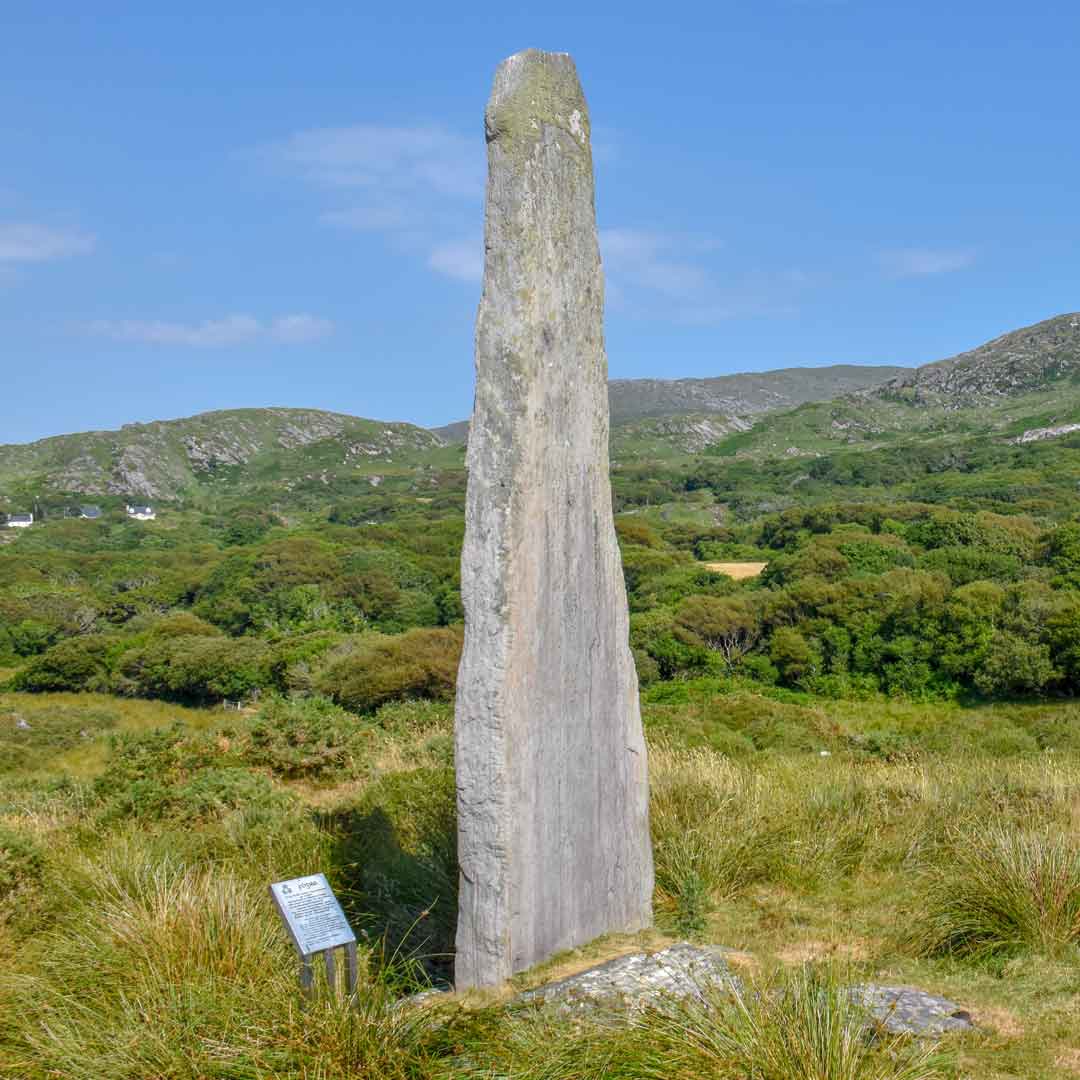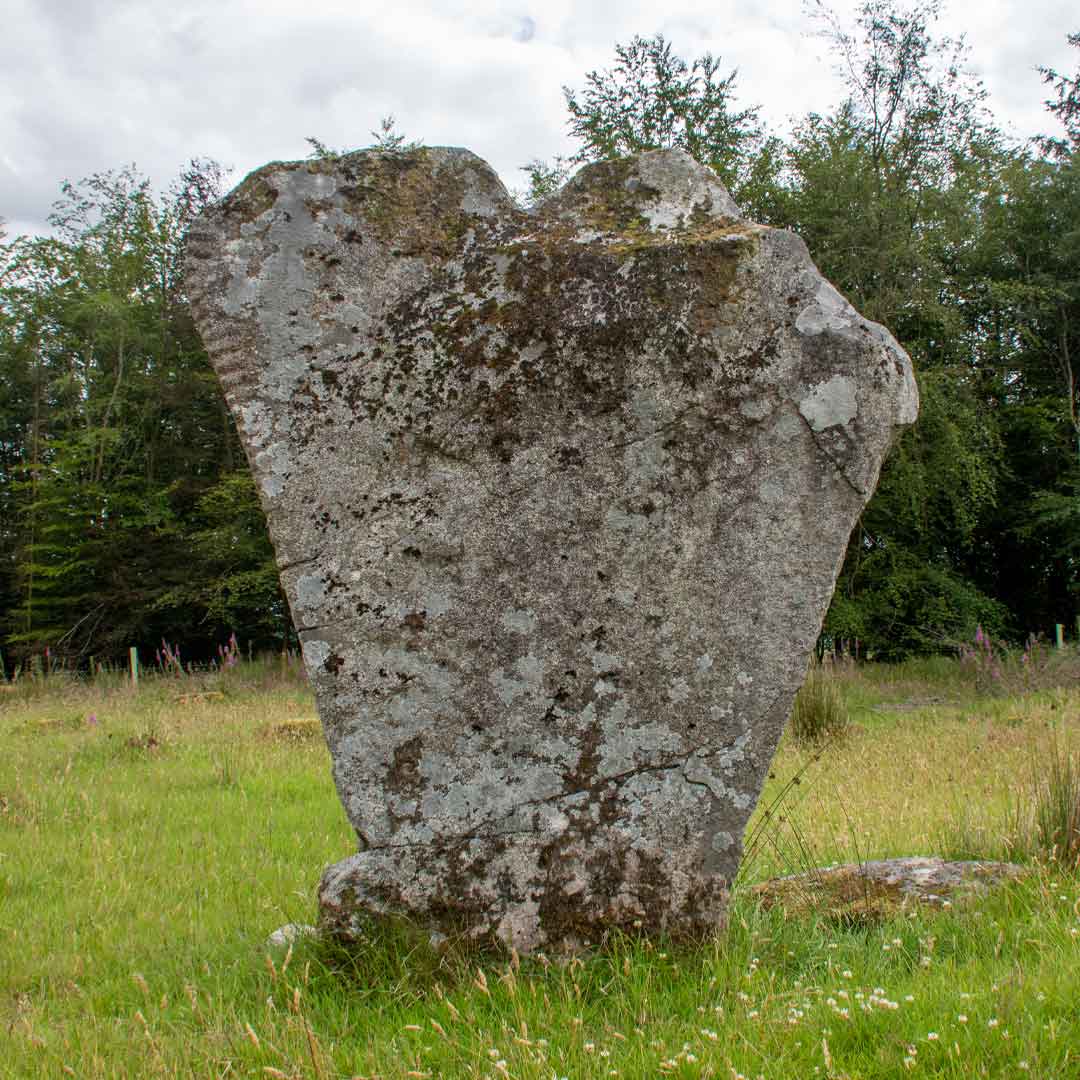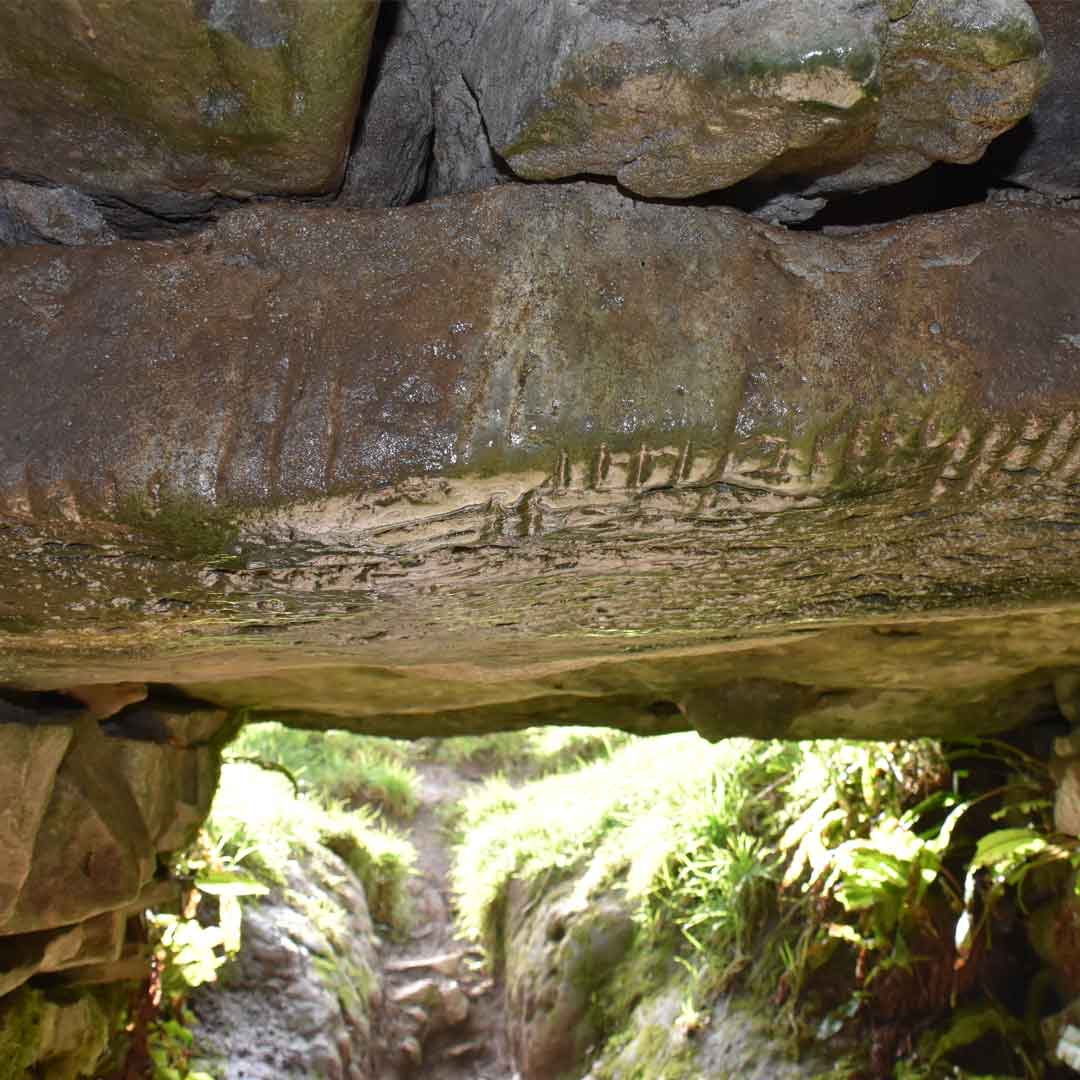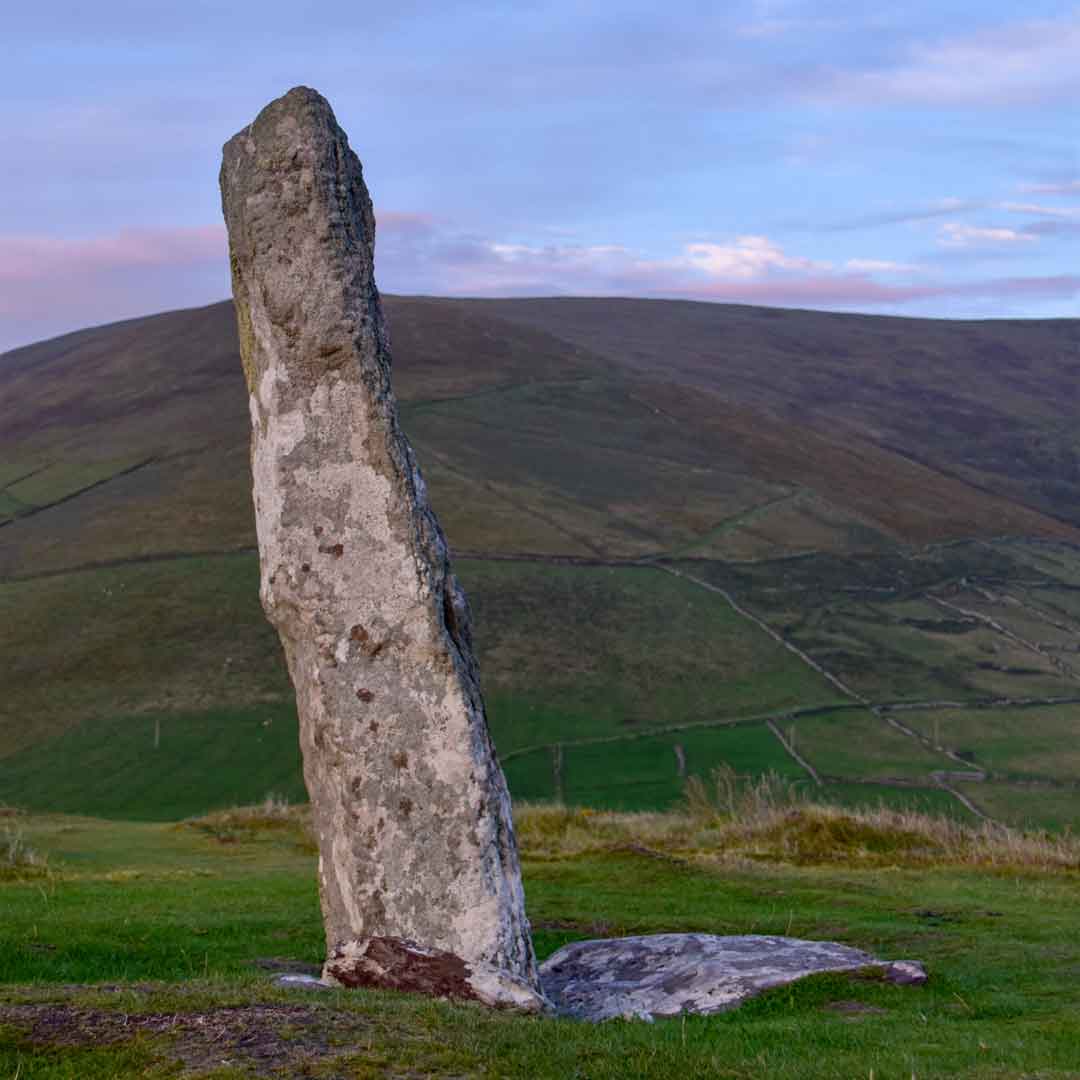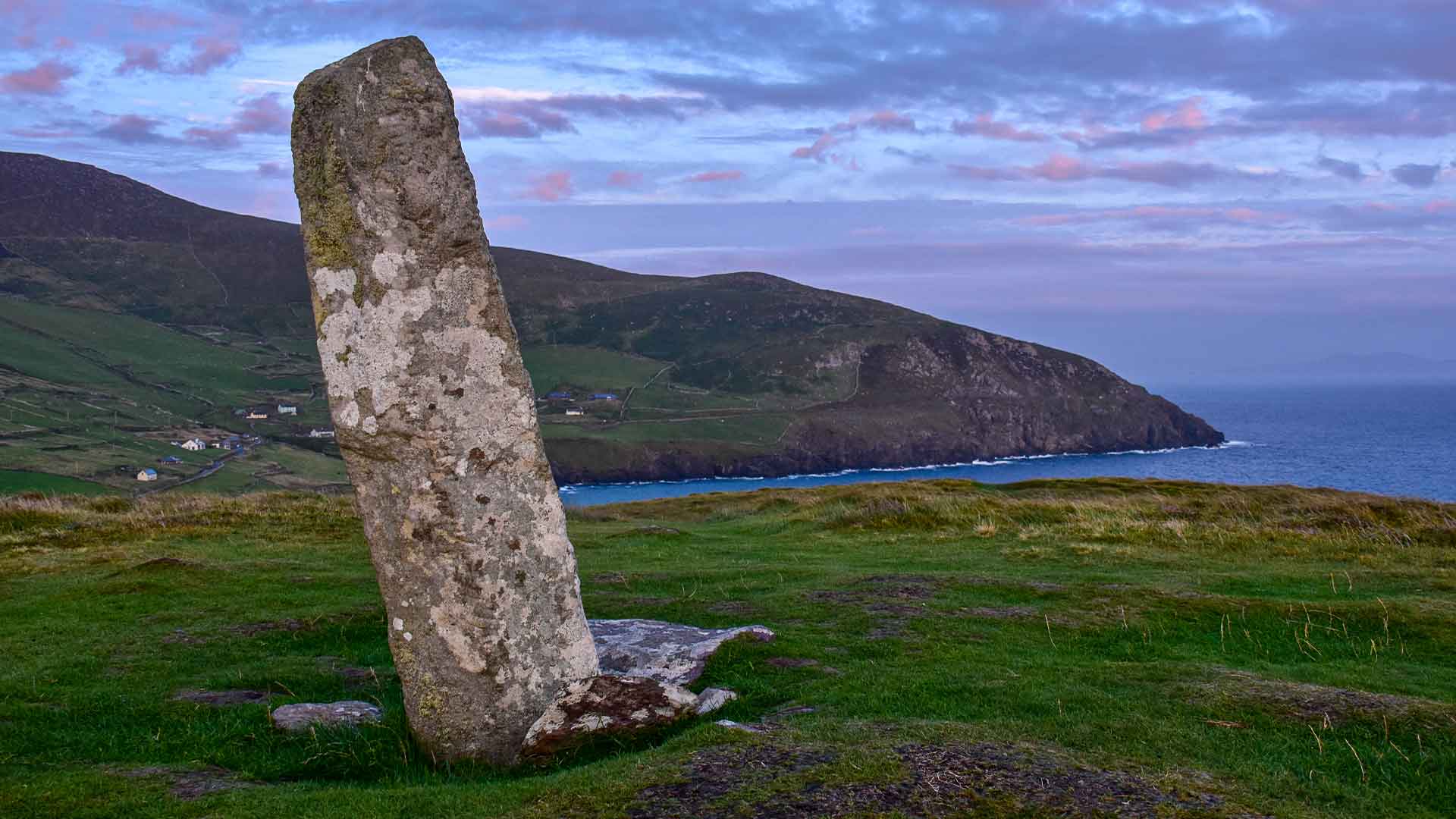
Ogham Stones
Ogham is the script used to write earliest known form of the Irish language, known as Primitive or Archaic Irish. It appears on monuments known as Ogham Stones, around 400 of which can be found throughout Ireland, particularly in counties Cork & Kerry.
The script consists of groups parallel lines and notches, carved along the natural edge of a stone, generally starting at the bottom left-hand side and reading upwards (extending across the top of the stone and down the right-hand side, for longer inscriptions).
The vast majority of inscriptions record the name of a person, along with their ancestors or tribal name and would have functioned as memorials or territorial markers. The ogham stones date from around 350AD to 650AD, but it is thought that the script itself could have developed much earlier.
The actual word ‘ogham’ is thought to have originated from the Irish phrase ‘og-úaim’ (point-seam), which refers to the seam or mark made by the point of a sharp weapon. Although all surviving Ogham inscriptions are on stone, it was probably more commonly inscribed on sticks, stakes and trees, unfortunately, no examples of these have survived.
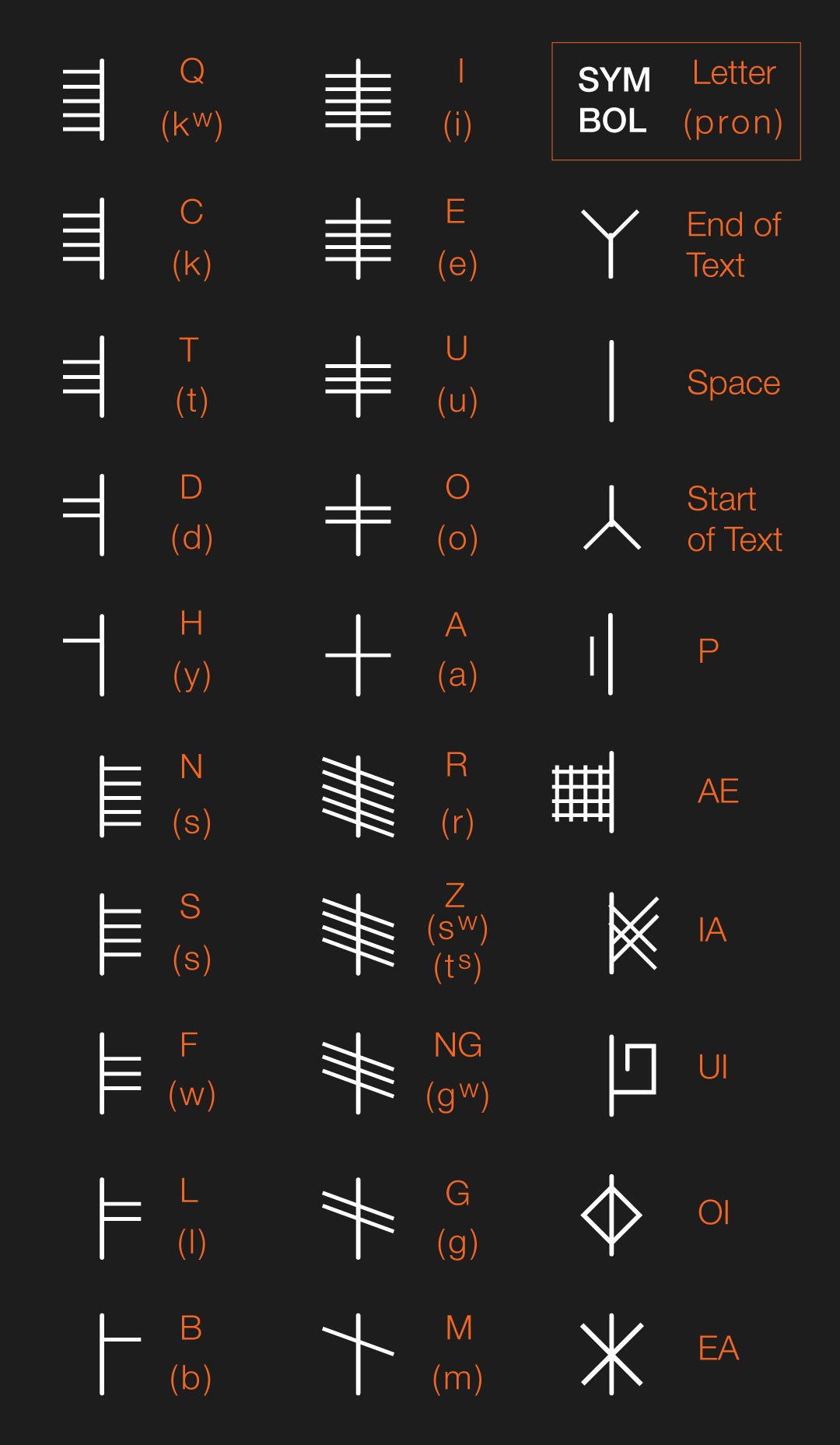
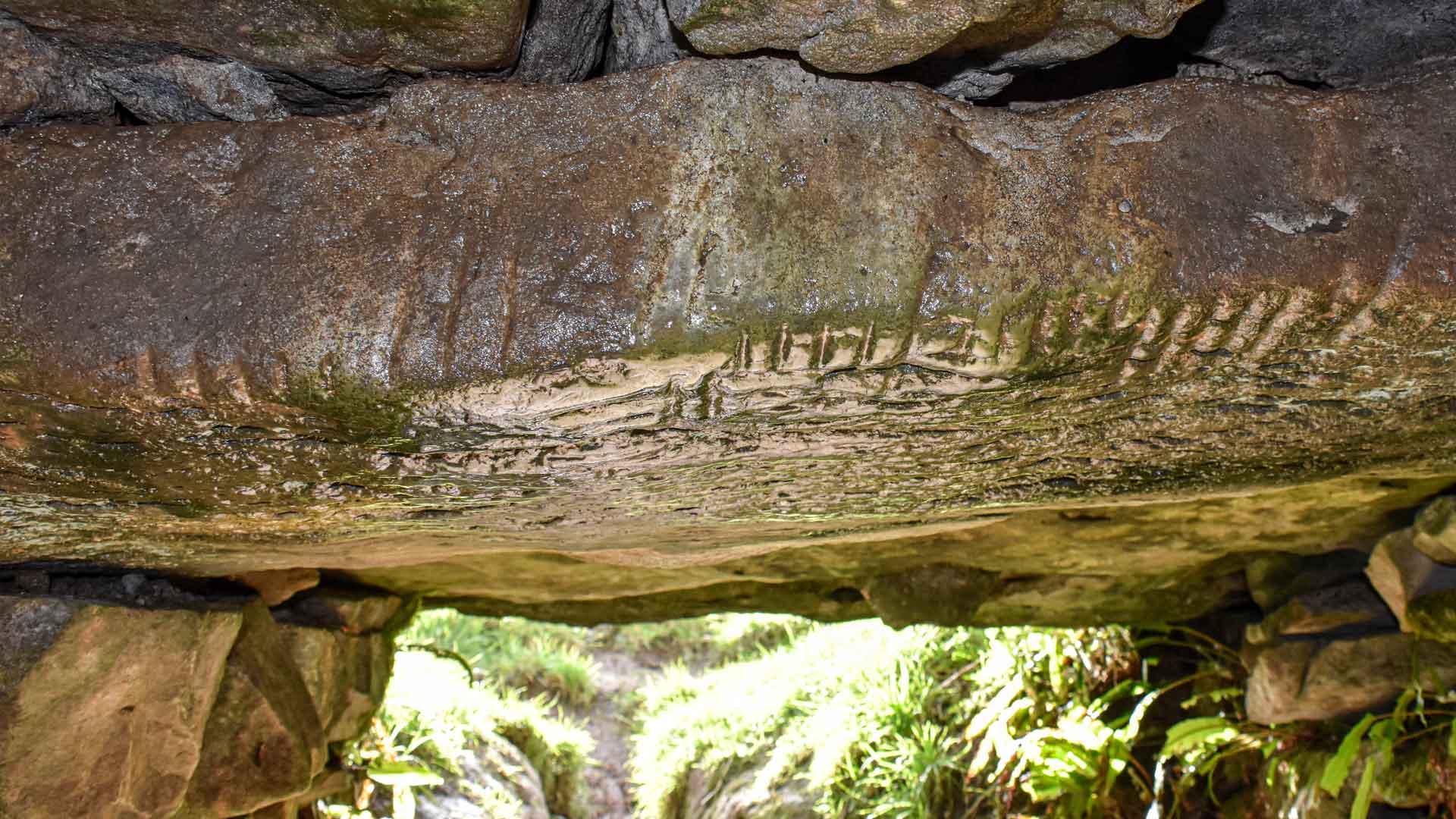
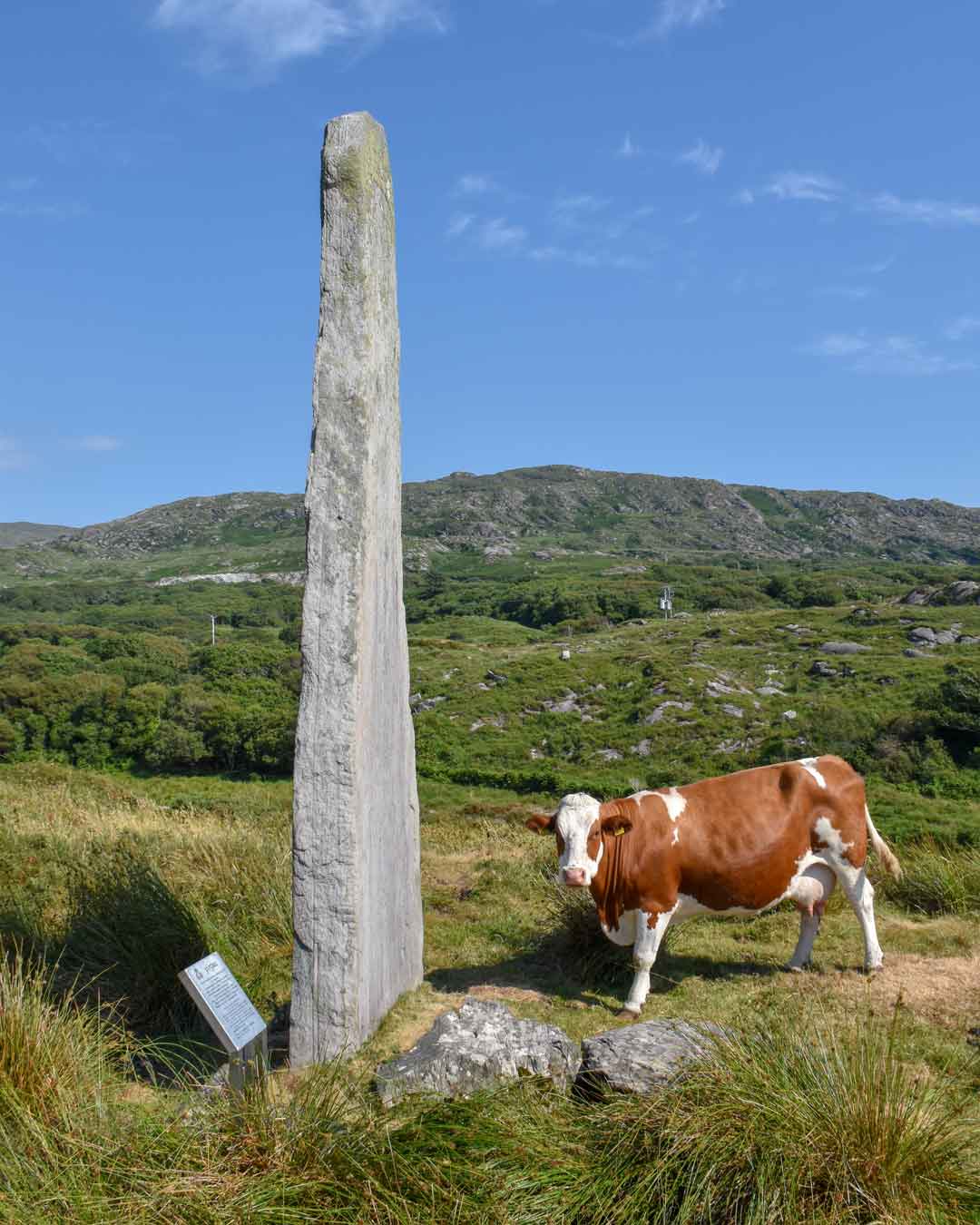
The ogham alphabet originally consisted of twenty distinct characters (feda), arranged in four families (aicmí). Five additional letters were later introduced (mainly in the manuscript tradition), the so-called forfeda which include the letters/sounds: EA, OI, UI, IA & AE. Another later addition was the symbol for the letter P which does not appear in Primitive Irish.
The origin of ogham itself is unknown but is thought to date to the 1st Century AD, when the Irish came in contact with the Latin script used in Roman Britain. It has been suggested that ogham was first created as a cryptic alphabet, designed by the Irish so as not to be understood by those with a knowledge of the Latin alphabet.
It is possible that ogham has its origins in the Germanic runic script, which would explain the presence of the letters "H" and "Z" that are not attested in primitive Irish and the presence of "U" and "W" which are unknown in Latin writing. The term "Rune" is related to Proto-Celtic *rūna ('secret, magic'), which is attested in Old Irish 'rún' ('mystery, secret').
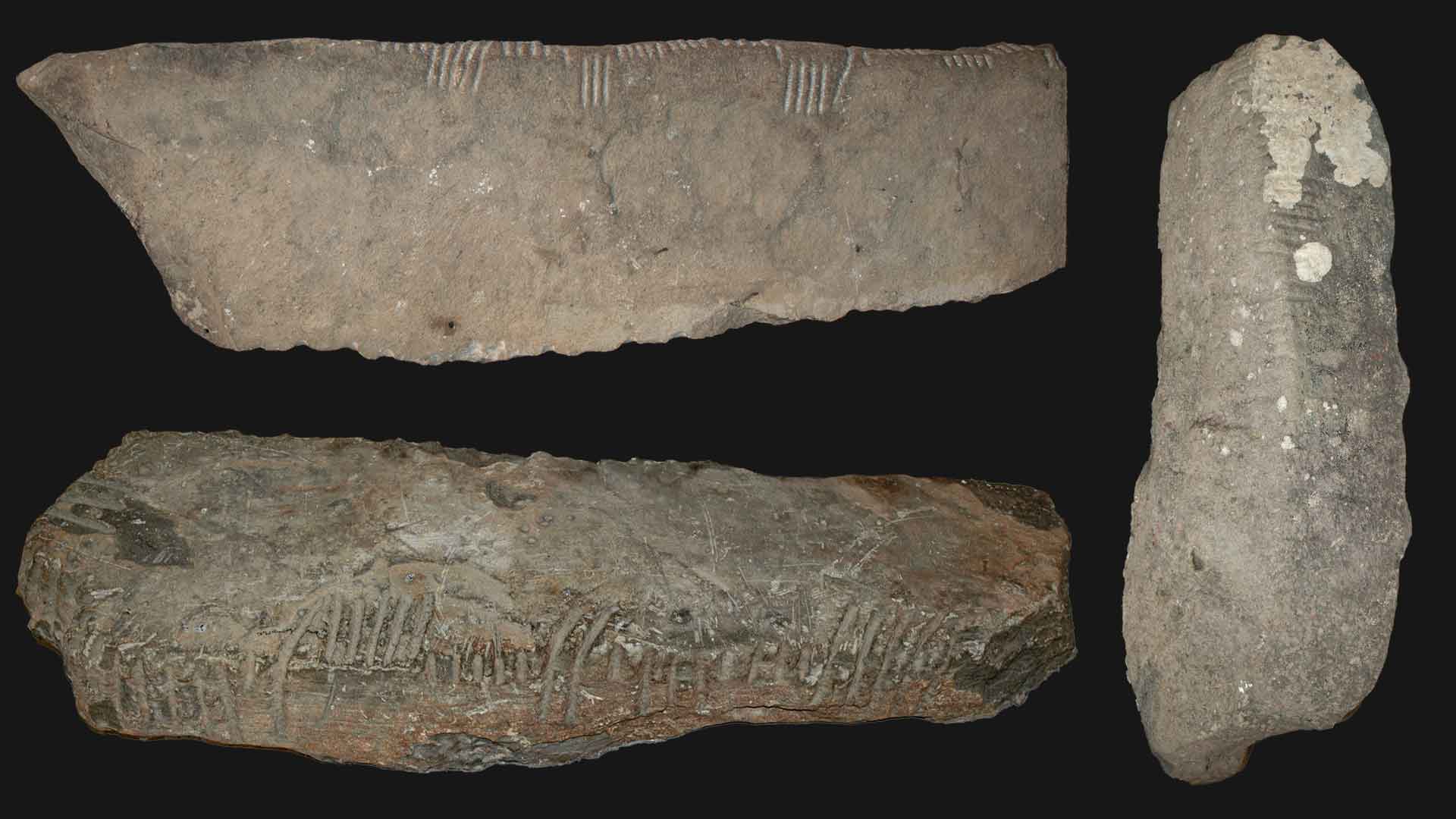
According to Irish mythology, Ogham was invented by Ogma, the Irish god of speech, language, eloquence and learning, and there are many references to it throughout Irish mythology. However, all these references describe Ogham being written on wood and not stone; with one exception from the epic 'Táin Bó Cúailnge’ (The Cattle Raid of Cooley), in which a stone pillar has a ring of iron with an ogham inscription declaring it ‘geis’ (taboo) for a warrior bearing arms to approach without being challenged to single combat. The great Ulster warrior Cúchulainn responds to this challenge by throwing the pillar, inscribed ring and all, into a nearby lake.
Another mythical example appears in ‘Baile in Scáil’ (The Phantom’s Frenzy), a tale in which the High King (Conn of the Hundred Battles), is visited by the god Lugh; who recites a poem telling the names and deeds of all the future Kings of Ireland, from Conn himself to the end of time. The poem is so long that Conn's druids, are unable to memorise it and so write it down in ogham on four octagonal rods of yew, each twenty four feet long.
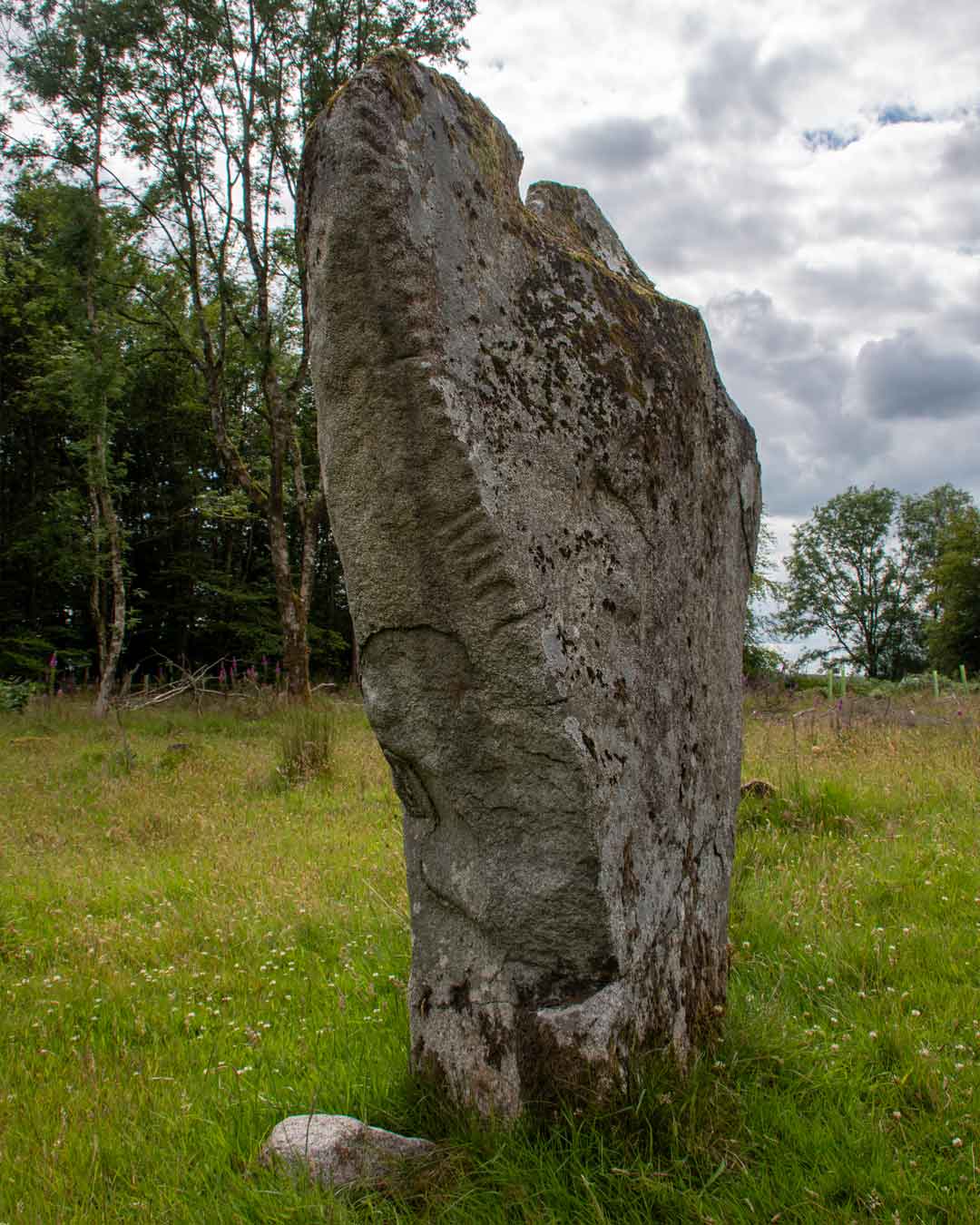
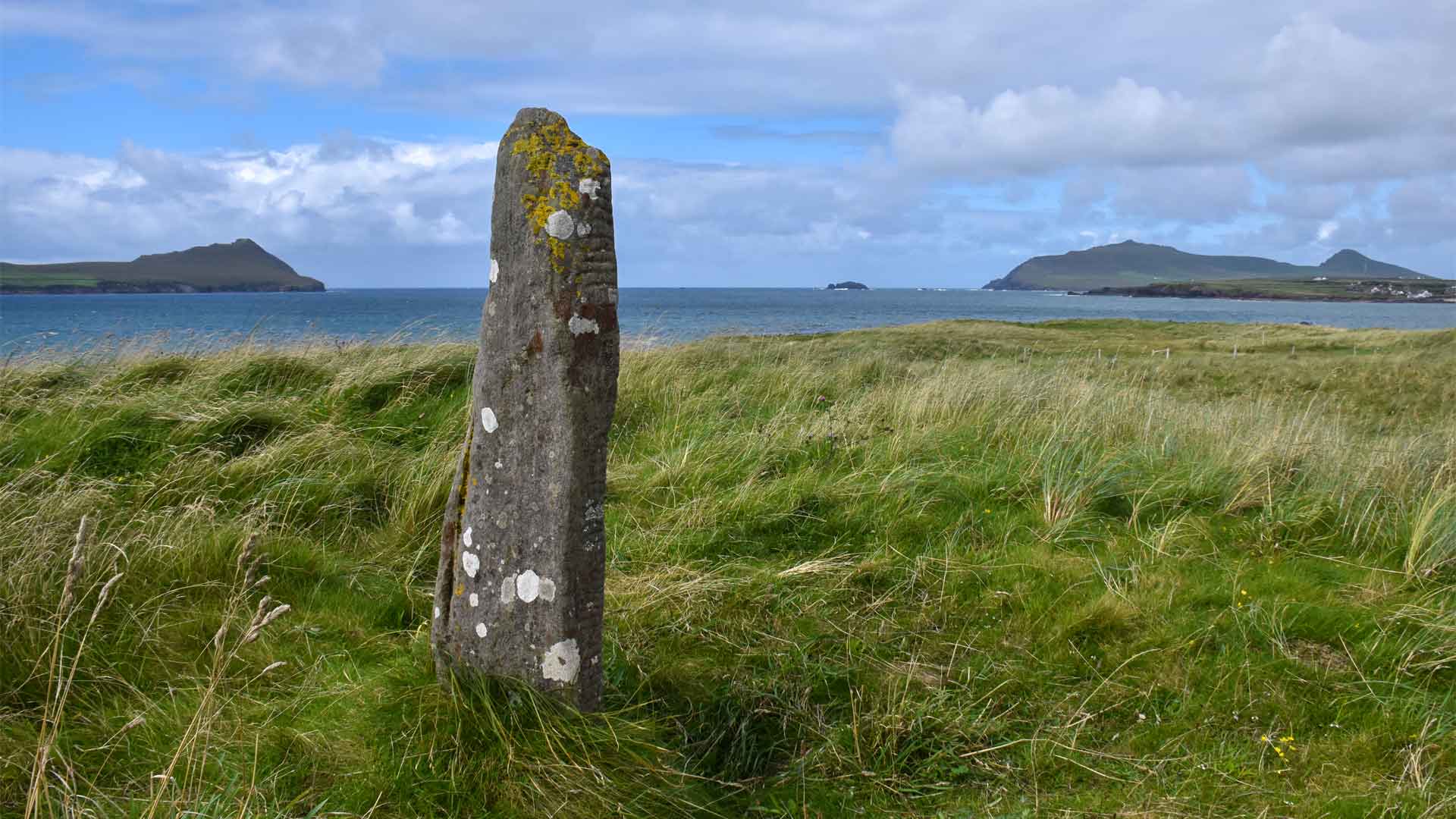
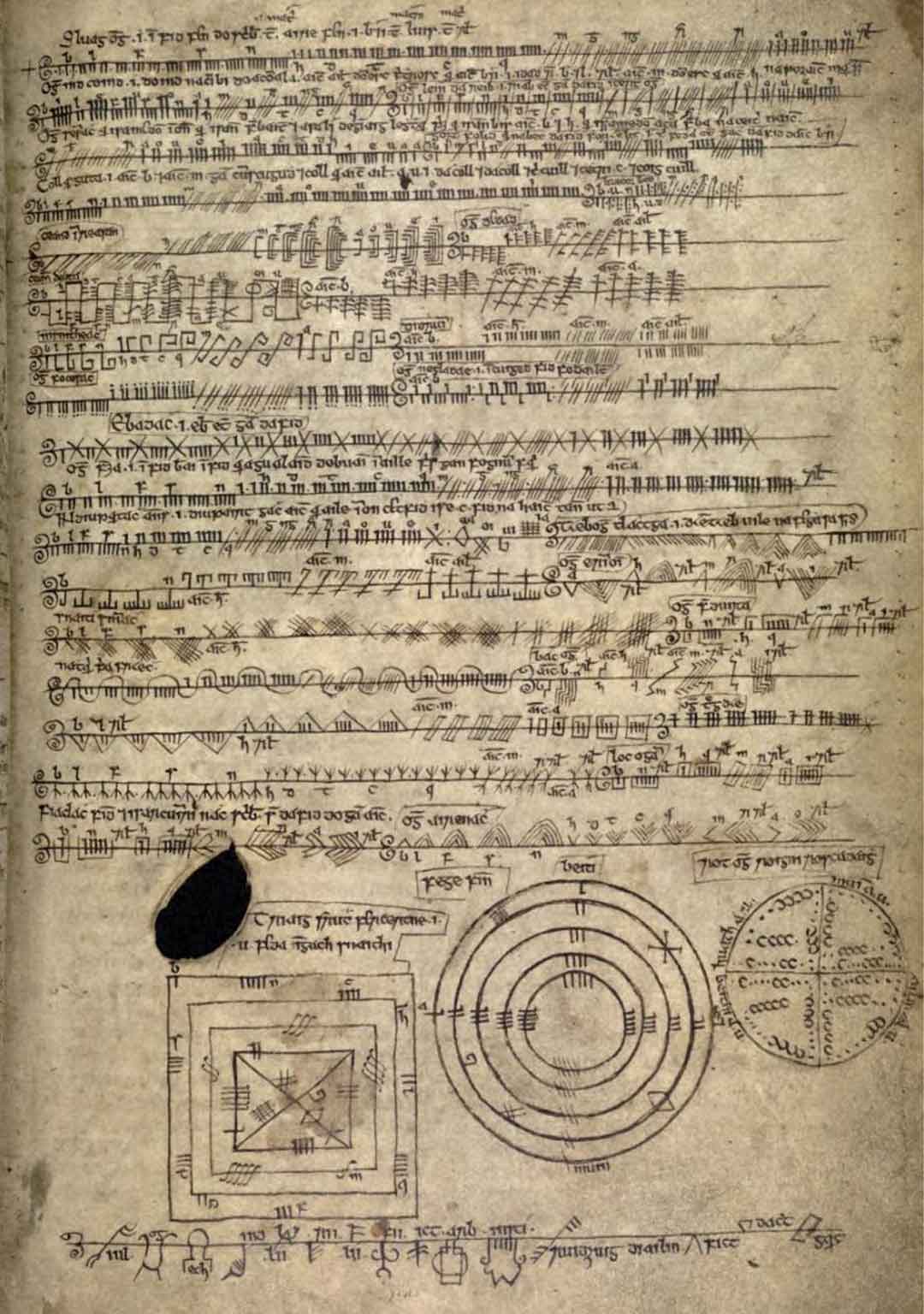
According to legend, the first message written in ogam was seven b's on a birch, sent as a warning to Lugh, meaning: "your wife will be carried away seven times to the otherworld unless the birch protects her". For this reason, the letter b is said to be named after the birch tree, and led to some letters being interpreted as names of trees or shrubs in the later manuscript tradition. However, only five of the twenty primary letters (feda) have tree names and the more recent assumption that ogham is an 'ancient tree alphabet' comes from the imagination of modern writers rather than any historical sources.
The carving of ogham inscriptions onto stones largely died out in the early 8th Century as writing in manuscripts become established. However, written horizontally, and with the addition of the new letters (the forfeda), Ogham continued to be used in manuscripts until the 16th Century.
Ogham also continued to serve as the basis for teaching the rules of poetry to the ‘filí’, an elite class of poets in Medieval Irish society. This was because the Ogham alphabet was felt to be peculiarly suited to the needs of the Irish language.
Check out the examples of Ogham Stones below or click here to view all
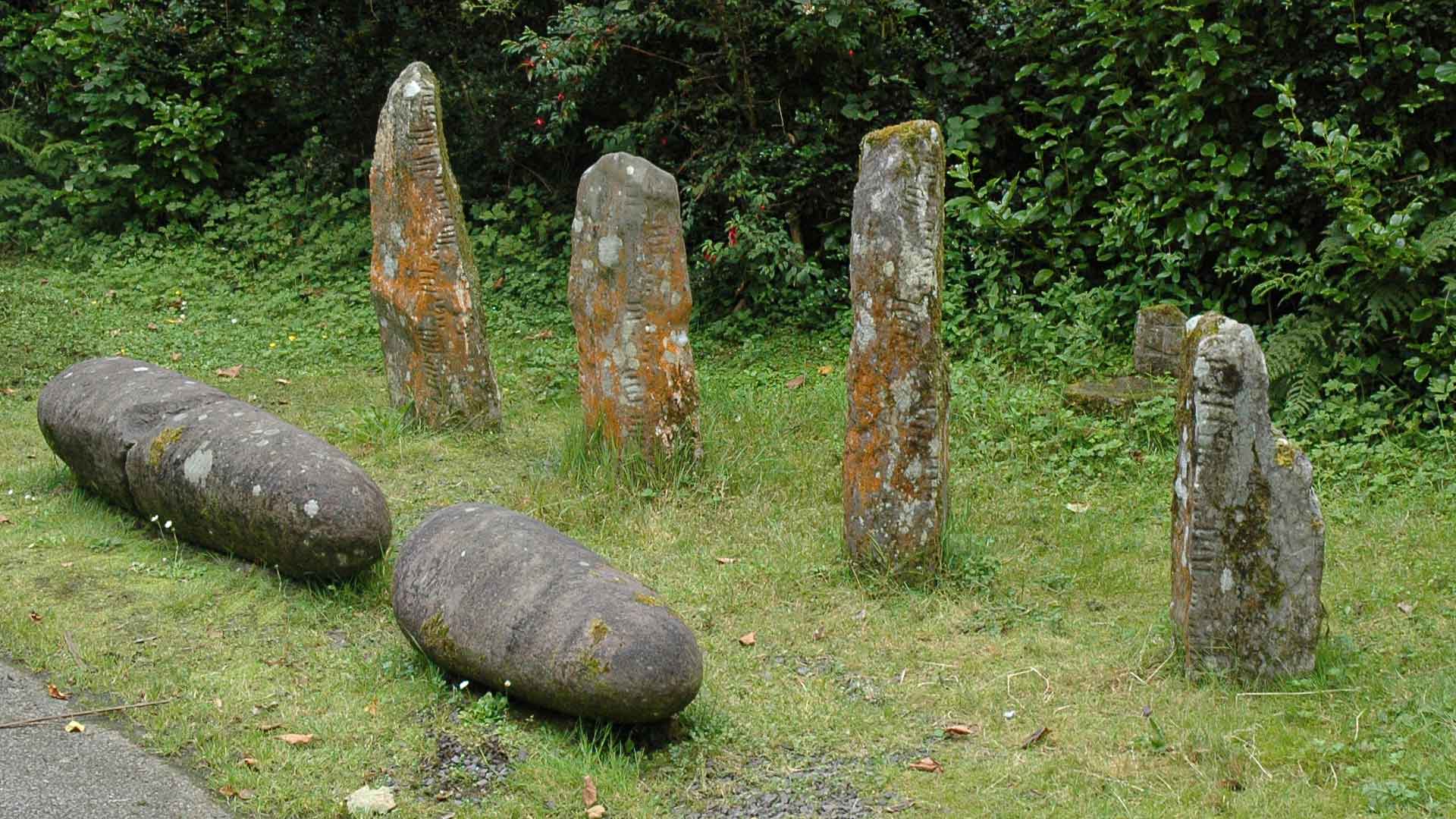
Examples of Ogham Stones

Ogham Stones
Ogham is the script used to write earliest known form of the Irish language, known as Primitive or Archaic Irish. It appears on monuments known as Ogham Stones, around 400 of which can be found throughout Ireland, particularly in counties Cork & Kerry.
The script consists of groups parallel lines and notches, carved along the natural edge of a stone, generally starting at the bottom left-hand side and reading upwards (extending across the top of the stone and down the right-hand side, for longer inscriptions).
The vast majority of inscriptions record the name of a person, along with their ancestors or tribal name and would have functioned as memorials or territorial markers. The ogham stones date from around 350AD to 650AD, but it is thought that the script itself could have developed much earlier.
The actual word ‘ogham’ is thought to have originated from the Irish phrase ‘og-úaim’ (point-seam), which refers to the seam or mark made by the point of a sharp weapon. Although all surviving Ogham inscriptions are on stone, it was probably more commonly inscribed on sticks, stakes and trees, unfortunately, no examples of these have survived.



The ogham alphabet originally consisted of twenty distinct characters (feda), arranged in four families (aicmí). Five additional letters were later introduced (mainly in the manuscript tradition), the so-called forfeda which include the letters/sounds: EA, OI, UI, IA & AE. Another later addition was the symbol for the letter P which does not appear in Primitive Irish.
The origin of ogham itself is unknown but is thought to date to the 1st Century AD, when the Irish came in contact with the Latin script used in Roman Britain. It has been suggested that ogham was first created as a cryptic alphabet, designed by the Irish so as not to be understood by those with a knowledge of the Latin alphabet.
It is possible that ogham has its origins in the Germanic runic script, which would explain the presence of the letters "H" and "Z" that are not attested in primitive Irish and the presence of "U" and "W" which are unknown in Latin writing. The term "Rune" is related to Proto-Celtic *rūna ('secret, magic'), which is attested in Old Irish 'rún' ('mystery, secret').

According to Irish mythology, Ogham was invented by Ogma, the Irish god of speech, language, eloquence and learning, and there are many references to it throughout Irish mythology. However, all these references describe Ogham being written on wood and not stone; with one exception from the epic 'Táin Bó Cúailnge’ (The Cattle Raid of Cooley), in which a stone pillar has a ring of iron with an ogham inscription declaring it ‘geis’ (taboo) for a warrior bearing arms to approach without being challenged to single combat. The great Ulster warrior Cúchulainn responds to this challenge by throwing the pillar, inscribed ring and all, into a nearby lake.
Another mythical example appears in ‘Baile in Scáil’ (The Phantom’s Frenzy), a tale in which the High King (Conn of the Hundred Battles), is visited by the god Lugh; who recites a poem telling the names and deeds of all the future Kings of Ireland, from Conn himself to the end of time. The poem is so long that Conn's druids, are unable to memorise it and so write it down in ogham on four octagonal rods of yew, each twenty four feet long.



According to legend, the first message written in ogam was seven b's on a birch, sent as a warning to Lugh, meaning: "your wife will be carried away seven times to the otherworld unless the birch protects her". For this reason, the letter b is said to be named after the birch tree, and led to some letters being interpreted as names of trees or shrubs in the later manuscript tradition. However, only five of the twenty primary letters (feda) have tree names and the more recent assumption that ogham is an 'ancient tree alphabet' comes from the imagination of modern writers rather than any historical sources.
The carving of ogham inscriptions onto stones largely died out in the early 8th Century as writing in manuscripts become established. However, written horizontally, and with the addition of the new letters (the forfeda), Ogham continued to be used in manuscripts until the 16th Century.
Ogham also continued to serve as the basis for teaching the rules of poetry to the ‘filí’, an elite class of poets in Medieval Irish society. This was because the Ogham alphabet was felt to be peculiarly suited to the needs of the Irish language.
Check out the examples of Ogham Stones below or click here to view all

Examples of Ogham Stones

Ogham Stones
Ogham is the script used to write earliest known form of the Irish language, known as Primitive or Archaic Irish. It appears on monuments known as Ogham Stones, around 400 of which can be found throughout Ireland, particularly in counties Cork & Kerry.
The script consists of groups parallel lines and notches, carved along the natural edge of a stone, generally starting at the bottom left-hand side and reading upwards (extending across the top of the stone and down the right-hand side, for longer inscriptions).
The vast majority of inscriptions record the name of a person, along with their ancestors or tribal name and would have functioned as memorials or territorial markers. The ogham stones date from around 350AD to 650AD, but it is thought that the script itself could have developed much earlier.
The actual word ‘ogham’ is thought to have originated from the Irish phrase ‘og-úaim’ (point-seam), which refers to the seam or mark made by the point of a sharp weapon. Although all surviving Ogham inscriptions are on stone, it was probably more commonly inscribed on sticks, stakes and trees, unfortunately, no examples of these have survived.


The ogham alphabet originally consisted of twenty distinct characters (feda), arranged in four families (aicmí). Five additional letters were later introduced (mainly in the manuscript tradition), the so-called forfeda which include the letters/sounds: EA, OI, UI, IA & AE. Another later addition was the symbol for the letter P which does not appear in Primitive Irish.
The origin of ogham itself is unknown but is thought to date to the 1st Century AD, when the Irish came in contact with the Latin script used in Roman Britain. It has been suggested that ogham was first created as a cryptic alphabet, designed by the Irish so as not to be understood by those with a knowledge of the Latin alphabet.
It is possible that ogham has its origins in the Germanic runic script, which would explain the presence of the letters "H" and "Z" that are not attested in primitive Irish and the presence of "U" and "W" which are unknown in Latin writing. The term "Rune" is related to Proto-Celtic *rūna ('secret, magic'), which is attested in Old Irish 'rún' ('mystery, secret').


According to Irish mythology, Ogham was invented by Ogma, the Irish god of speech, language, eloquence and learning, and there are many references to it throughout Irish mythology. However, all these references describe Ogham being written on wood and not stone; with one exception from the epic 'Táin Bó Cúailnge’ (The Cattle Raid of Cooley), in which a stone pillar has a ring of iron with an ogham inscription declaring it ‘geis’ (taboo) for a warrior bearing arms to approach without being challenged to single combat. The great Ulster warrior Cúchulainn responds to this challenge by throwing the pillar, inscribed ring and all, into a nearby lake.
Another mythical example appears in ‘Baile in Scáil’ (The Phantom’s Frenzy), a tale in which the High King (Conn of the Hundred Battles), is visited by the god Lugh; who recites a poem telling the names and deeds of all the future Kings of Ireland, from Conn himself to the end of time. The poem is so long that Conn's druids, are unable to memorise it and so write it down in ogham on four octagonal rods of yew, each twenty four feet long.


According to legend, the first message written in ogam was seven b's on a birch, sent as a warning to Lugh, meaning: "your wife will be carried away seven times to the otherworld unless the birch protects her". For this reason, the letter b is said to be named after the birch tree, and led to some letters being interpreted as names of trees or shrubs in the later manuscript tradition. However, only five of the twenty primary letters (feda) have tree names and the more recent assumption that ogham is an 'ancient tree alphabet' comes from the imagination of modern writers rather than any historical sources.
The carving of ogham inscriptions onto stones largely died out in the early 8th Century as writing in manuscripts become established. However, written horizontally, and with the addition of the new letters (the forfeda), Ogham continued to be used in manuscripts until the 16th Century.
Ogham also continued to serve as the basis for teaching the rules of poetry to the ‘filí’, an elite class of poets in Medieval Irish society. This was because the Ogham alphabet was felt to be peculiarly suited to the needs of the Irish language.
Check out the examples of Ogham Stones below or click here to view all



